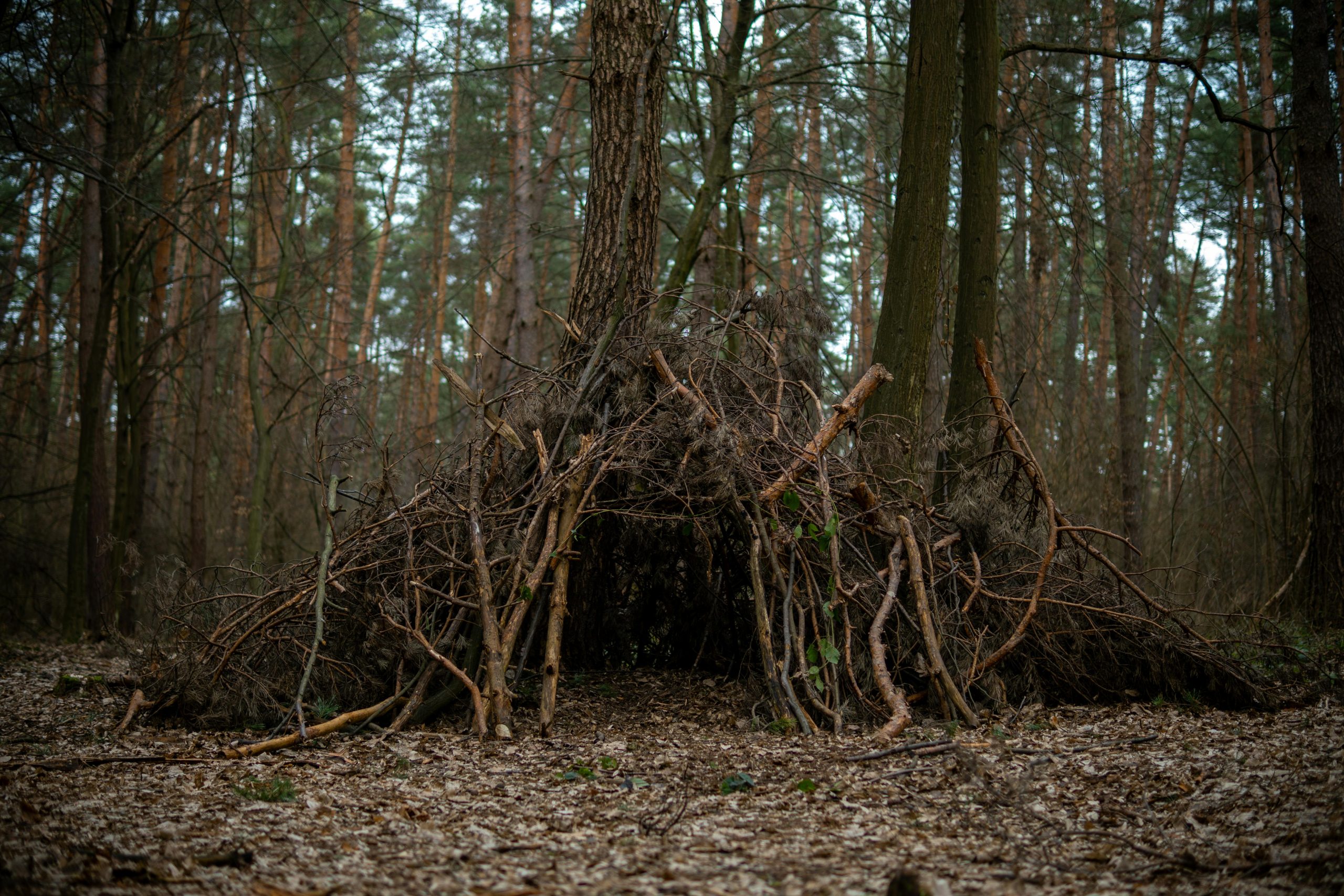Nature’s beauty can be captivating, but it can also be unforgiving. Whether you’re an experienced outdoors enthusiast or an unexpected visitor to the wild, getting lost or facing an emergency can quickly turn a thrilling adventure into a struggle for survival. One of the most crucial steps in surviving in the wild is finding or building a proper shelter.
This comprehensive guide equips you with the knowledge and skills to build an emergency shelter, providing protection from the elements and increasing your chances of a safe rescue.
Location, Location, Location: Choosing the Right Spot
Before constructing your shelter, carefully consider the location:
- Flat and Elevated Ground: Choose a flat, well-drained area to avoid flooding during rain or snowmelt. Look for slightly elevated ground if possible, to further minimize the risk of water pooling.
- Shelter from Wind and Elements: Find an area protected from prevailing winds and out of direct sunlight if it’s scorching hot. Look for natural formations like rock overhangs or fallen logs that can offer some protection.
- Avoid Hazards: Steer clear of areas prone to landslides, falling rocks, or flooding. Avoid building under dead trees or branches that could break and cause injury.
Types of Emergency Shelters: Building for Different Scenarios
The best type of shelter depends on the available materials, your skill level, and the environmental conditions. Here are some common options:
- Lean-to Shelter: This simple yet effective design is a great option for beginners. Find a sturdy tree or rock wall and lean long branches against it. Cover the top with layers of leaves, bark, branches, or any available material for insulation.
- Debris Hut: This shelter allows for more space and protection. Construct a frame using sturdy branches and cover it with leaves, grass, bark, or even animal skins if available. Remember, the thicker the covering, the better the insulation.
- A-Frame Shelter: This design provides good headroom and ventilation. Build two A-frame structures using sturdy branches and lash them together at the top. Cover the sides and top with insulating materials.
- Snow Cave (Cold Climates Only): If stranded in a snowy environment, consider digging a cave in a deep snowdrift. Ensure proper ventilation by digging a small hole at the top. Snow is a good insulator, providing warmth and protection from the elements.
Gathering Materials: Utilizing What Nature Provides
Look around you and identify resources for building your shelter. Here are some commonly available materials:
- Branches and Logs: Use sturdy branches for the frame and smaller ones for support and covering.
- Leaves and Bark: Provide excellent insulation material.
- Grass and Reeds: Can be used for padding and insulation, especially on the floor of your shelter.
- Rocks: Helpful for anchoring branches, creating windbreaks, and reflecting heat from a fire.
Shelter Building Techniques: Putting it All Together
Once you have your location and materials, let’s get building! Here are some general tips:
- Secure the Frame: Ensure the frame of your shelter is sturdy and stable. Lash branches together with vines, strips of bark, or even your shoelaces if necessary.
- Create a Sloped Roof: A sloped roof allows rain or snow to run off and prevents water from pooling on top of your shelter.
- Insulate Effectively: Fill in the gaps in your shelter with leaves, bark, or grass to provide insulation and protection from the elements.
- Minimize Openings: Create a small entrance only large enough to crawl through to conserve heat and keep out unwanted critters.
- Build a Bed: Insulate the floor of your shelter with leaves, grass, or anything that provides some padding and keeps you off the cold ground.
Bonus Tip: Fire Safety
If possible, build a fire outside your shelter for warmth and cooking. Never build a fire directly inside your shelter as it can cause a fire hazard and carbon monoxide poisoning.
Signaling for Help: Don’t Wait to Be Found
While shelter provides protection, don’t simply wait for rescue. Focus on attracting attention and signaling for help:
- Build a Signal Fire: Create a large fire in a clear area, preferably in the shape of an SOS symbol.
- Use a Mirror: Reflect sunlight towards potential rescuers with a mirror or any reflective surface.
- Blow a Whistle: A whistle can create a loud and consistent sound to attract attention.
- Create Ground Markers: Use stones or branches to create large SOS symbols or directional arrows on the ground.
